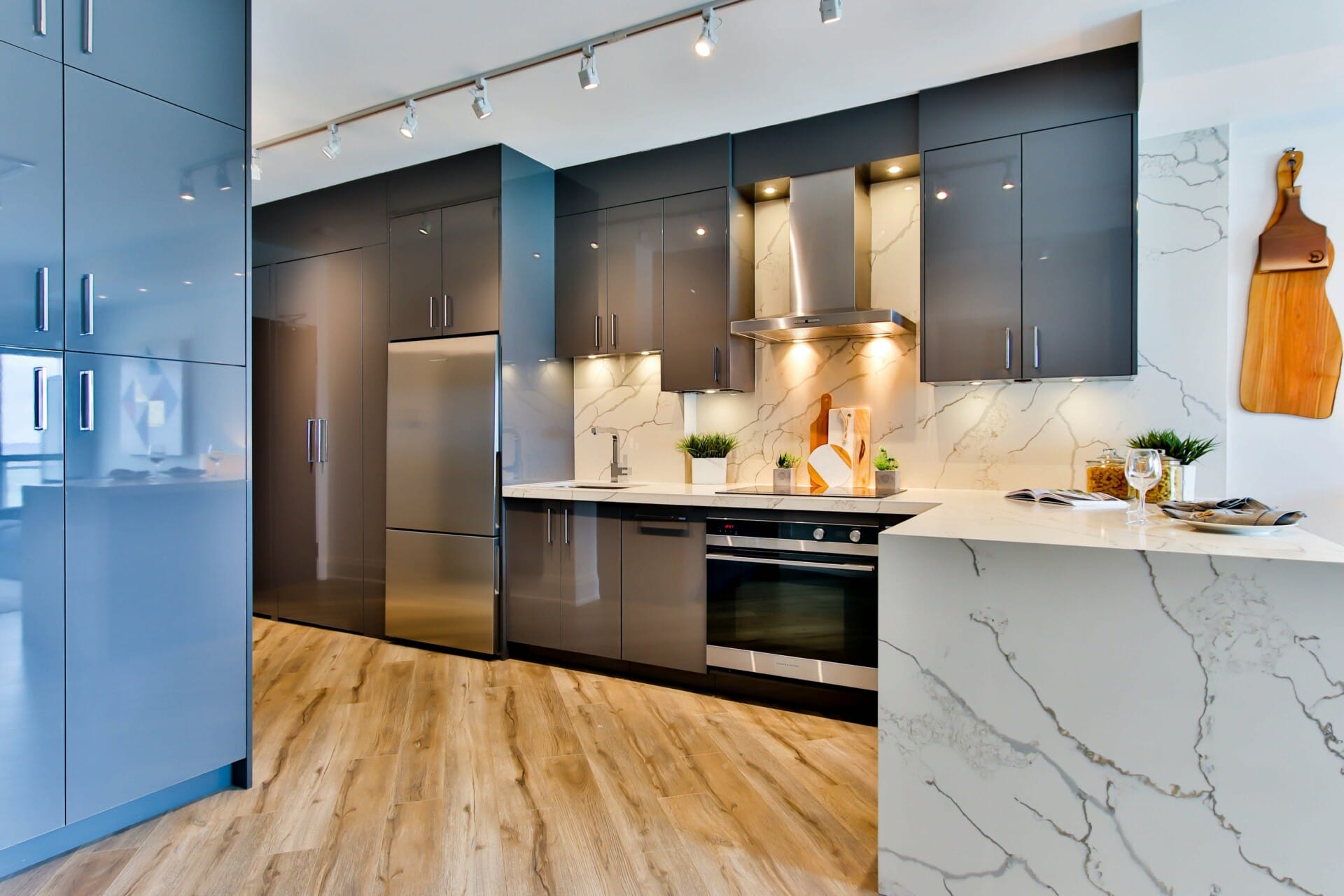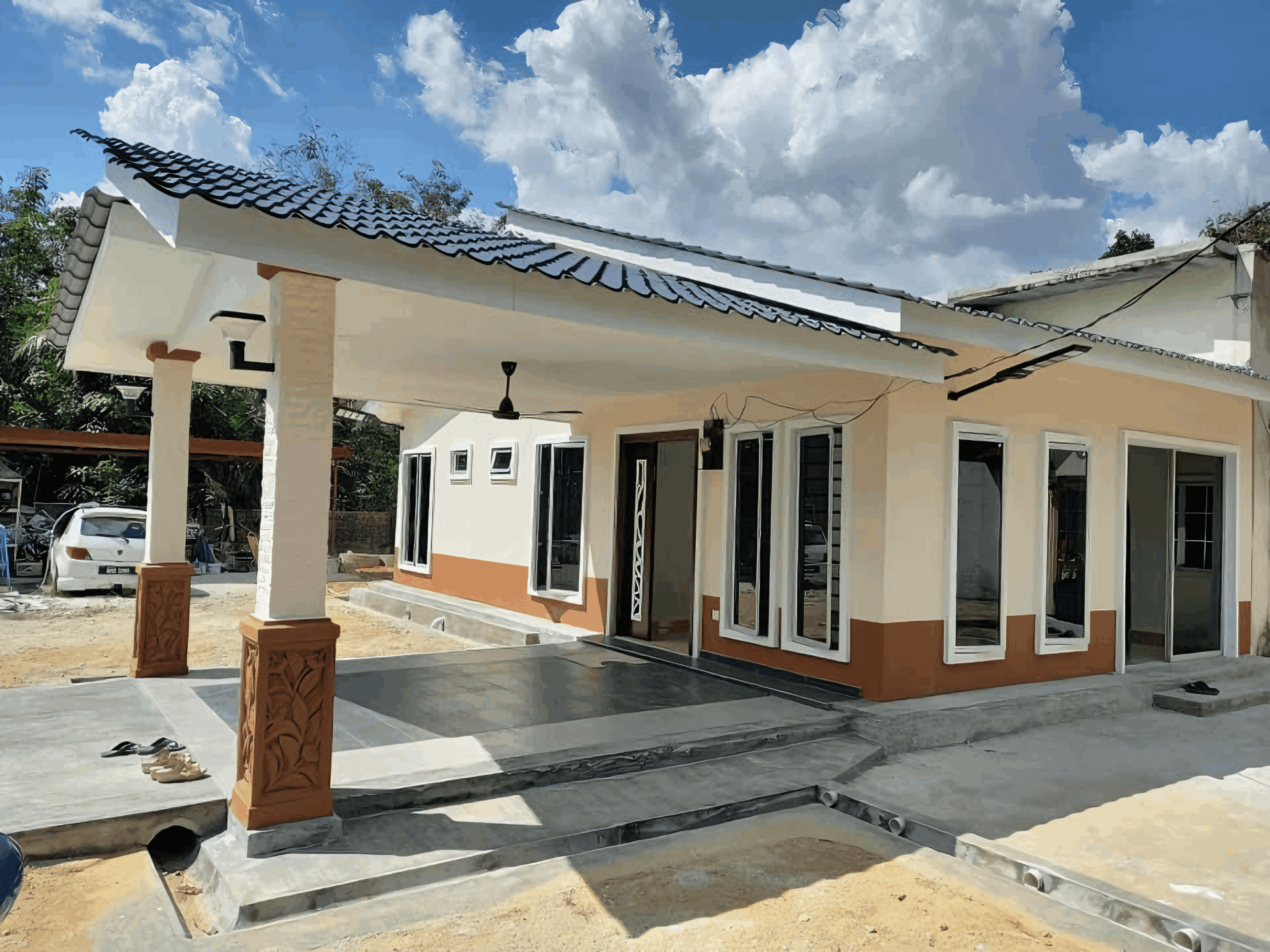- Bina Rumah Batu-Bata
- Zero Deposit
- Spesifikasi Rumah
- Lokasi Projek
- Pembiayaan LPPSA
- Garis Panduan LPPSA (Rasmi)
- Soalan Lazim LPPSA
- E-Book LPPSA (Download)
- 1. Apa itu LPPSA?
- 2. Kelebihan LPPSA
- 3. Syarat Kelayakan
- 4. Jenis-Jenis Pembiayaan
- Jenis 1 – Pembelian Rumah Kediaman Yang Telah Siap
- Jenis 2 – Membina Rumah Di Atas Tanah Sendiri
- Jenis 3 – Membeli Rumah Kediaman Yang Sedang Dibina
- Jenis 4 – Pembelian Tanah Bagi Pembinaan Rumah
- Jenis 5 – Melunaskan Keseluruhan/ Sebahagian Pinjaman Sedia Ada Daripada Bank/ Institusi Kewangan
- Jenis 6 – Pembinaan Rumah Kediaman Di Atas Tanah Yang Sedang Dibiayai Oleh BPP/ LPPSA
- Jenis 7 – Ubah Suai Rumah Yang Sedang Atau Telah Selesai Bayar Melalui LPPSA
- 5. Semak Kelayakan LPPSA
- 6. Dokumen Yang Diperlukan
- 7. Insurans/ Takaful LPPSA
- 8. Kos Yuran Guaman
- 9. BONUS: Bina Rumah
- Pembiayaan Koperasi
- Pengeluaran KWSP
- Bayaran Tunai
- Kalkulator
7 Modern Construction Technologies That Are Changing the Game in Malaysia | RumahHQ
Hey there! Have you ever thought about how much construction has changed over the years? In Malaysia, we’re seeing some really cool tech that’s shaking things up in the building industry. From speeding up projects to making them more environmentally friendly, these modern construction technologies are changing the game! Whether you’re in the business, a homeowner, or just curious, it’s fascinating to see how these innovations are making construction smarter and more efficient. So, let’s dive into seven game-changing technologies that are setting a new standard for the way we build in our beautiful country!
Emerging Innovations in Malaysian Construction
In recent years, the construction landscape in Malaysia has been radically transformed by a wave of technological innovations. One such technology making significant inroads is Building Information Modeling (BIM), which streamlines the construction process by allowing for detailed 3D visualization and collaborative planning. This technology not only aids in identifying potential design flaws early but also enhances communication among various stakeholders, leading to improved project outcomes. Additionally, drones have become invaluable tools for surveying construction sites, providing real-time data that helps teams track progress and conduct inspections with greater efficiency.
Another area of remarkable growth is the use of modular construction, where building components are prefabricated and assembled on-site. This method not only accelerates construction time but also reduces waste and cuts costs significantly. Malaysia has seen a surge in modular projects, particularly in residential and commercial sectors, as developers look for sustainable and efficient building solutions. Moreover, smart construction technology, which incorporates IoT (Internet of Things) devices and sensors, is paving the way for smarter project management. These connected devices can monitor construction conditions, supply chain logistics, and even equipment usage, ensuring that projects remain on schedule and within budget.
the rise of green building materials can’t be overlooked. As sustainability becomes a top priority, many Malaysian builders are turning to eco-friendly resources, such as recycled materials and innovative solutions like bio-concrete that actively heal cracks over time. The shift towards greener practices not only meets regulatory requirements but also appeals to environmentally-conscious consumers. By embracing these cutting-edge technologies, Malaysia is not only leading the way in modern construction but also promoting a more sustainable future for the industry.

The Role of Building Information Modeling in Project Management
In today’s fast-paced construction landscape, Building Information Modeling (BIM) plays a crucial role in enhancing project management efficiency. This sophisticated digital representation of physical and functional characteristics of a building allows stakeholders to visualize the project comprehensively before even breaking ground. With BIM, project managers can coordinate and collaborate seamlessly with architects, engineers, and contractors, ensuring that every party is on the same page. This alignment helps in reducing misunderstandings and errors, which can be costly both in time and resources.
BIM doesn’t just facilitate better communication; it also provides a data-rich environment for project management. From initial design to construction and maintenance, BIM stores vital information that can be pivotal during each phase of the project. Key benefits include:
- Improved visualization of architectural designs
- Enhanced scheduling and resource allocation
- Reduced risk of clashes and rework
Moreover, the integration of BIM with other technologies like Internet of Things (IoT) and Augmented Reality (AR) amplifies its effectiveness in the construction sector. By allowing real-time data exchange and project tracking, teams can quickly adapt to changes, mitigating potential challenges before they escalate. With BIM, project managers in Malaysia are not just speeding up timelines; they are also driving quality standards higher, paving the way for more sustainable and innovative construction practices.

Sustainable Materials Transforming the Industry Landscape
The construction industry is embracing a wave of eco-friendly innovations fueled by the demand for sustainable practices. As builders and developers shift their focus towards environmental responsibility, materials such as recycled steel, bamboo, and mycelium are leading the charge. These materials are not only reducing the carbon footprint of construction projects but also enhancing the overall durability and aesthetic appeal of buildings.
Among the standout options, cross-laminated timber (CLT) is gaining popularity due to its impressive strength and flexibility. It’s sourced from sustainably managed forests, making it a fantastic alternative to traditional concrete and steel. Furthermore, the use of geopolymer concrete, which incorporates industrial waste, is revolutionizing how we view concrete production. It promises a significant reduction in emissions compared to traditional cement. The integration of these materials is resulting in structures that are lighter, faster to construct, and more energy-efficient.
Moreover, utilizing reclaimed materials is not just beneficial for the planet; it also brings character and uniqueness to each project. Whether it’s salvaging bricks from old buildings or repurposing wooden beams, the charm of aged materials contributes to a sense of history and craftsmanship. As the industry continues to evolve, the adoption of these innovative materials is setting a new standard in sustainable construction. Here’s a quick look at some sustainable materials shaping the industry:
| Material | Benefit |
|---|---|
| Recycled Steel | Durable and uses less energy to produce. |
| Bamboo | Fast-growing and renewable resource. |
| Geopolymer Concrete | Lower carbon emissions and repurposes waste. |
| Cross-Laminated Timber | Lightweight, strong, and fast to assemble. |
| Mycelium | Biodegradable and renewable with great insulation properties. |
| Reclaimed Materials | Adds character and reduces waste. |


Drone Technology Enhancing Site Surveys and Monitoring
Drone technology has surged to the forefront of the construction industry, revolutionizing how site surveys and monitoring are conducted. With their ability to capture high-resolution imagery and perform rapid data collection, drones are transforming traditional methods. Instead of spending days walking through a site with measuring tools, construction teams can now fly a drone over the area, yielding precise topographical maps and 3D models in just a matter of hours.
One of the standout features of drone technology is its real-time data transmission. This capability allows project managers to track progress remotely, making adjustments as necessary and improving decision-making on the fly. Drones can easily access hard-to-reach locations, ensuring that every corner of the site is monitored efficiently. The benefits include:
- Increased Safety: Drones reduce the need for personnel to traverse hazardous areas, minimizing the risk of accidents.
- Cost Efficiency: Rapid data collection decreases labor costs and increases project turnaround times.
- Enhanced Accuracy: Drones provide highly detailed images and measurements, leading to fewer errors during construction.
As the construction landscape in Malaysia embraces these modern tools, the efficiency of site surveys and ongoing monitoring is vastly improved. By leveraging drone technology, companies can maintain tighter schedules and improve overall project management. Future innovations in drone capabilities promise even more potential in transforming construction practices, making it an exciting time for the industry.


Automation and Robotics Streamlining Labor Processes
In the world of construction, the integration of automation and robotics is shaking things up like never before. With a population that demands rapid urbanization and efficient building techniques, robots are stepping in to not only help but also optimize labor processes. They take over the repetitive and strenuous tasks of construction workers, allowing the human workforce to focus on creative and complex problem-solving aspects of building projects.
One of the significant benefits of this technology is its ability to enhance precision and safety on construction sites. With advanced machines capable of performing tasks like concrete pouring, bricklaying, and even site surveying, the scope for human error diminishes. Imagine a world where drones map out the layout of a construction site or robotic arms execute tasks with impeccable accuracy. The reduced need for manual labor means fewer injuries, lower insurance costs, and higher overall productivity.
Furthermore, the cost-effectiveness of implementing automation within labor processes cannot be overlooked. Businesses can save on labor costs while simultaneously increasing output and efficiency. Here are some key advantages of adopting automation and robotics in Malaysia’s construction industry:
- Increased Efficiency: Robots can work tirelessly around the clock, speeding up project timelines.
- Enhanced Safety: By taking of hazardous tasks, safety risks for human workers are significantly lowered.
- Cost Savings: Reduces labor expenses in the long run while improving profit margins.


Smart Wearables Improving Safety and Efficiency on Site
In the bustling construction sites of Malaysia, smart wearables are making waves by revolutionizing safety and efficiency for workers. These cutting-edge devices, worn on the body, empower construction crews with real-time data and communication, transforming the way they operate. With features like integrated GPS tracking, heart rate monitoring, and environmental analysis, these wearables ensure that personnel stay connected and informed, minimizing risks associated with heavy equipment and hazardous environments.
One significant advantage of using smart wearables is their ability to enhance safety protocols on-site. For instance, workers equipped with helmets that support augmented reality can access important blueprints or safety instructions right in their line of sight. This means fewer trips back to the office for information retrieval and a noticeable reduction in accidents due to distractions. Additionally, smart vests embedded with sensors can alert workers to potential dangers such as falling objects or unsafe proximity to heavy machinery, creating a proactive culture of safety that benefits everyone.
Moreover, the integration of these devices into daily operations leads to enhanced efficiency. By collecting data on worker movements, wearables can identify bottlenecks in workflow, enabling better time management and resource allocation. To illustrate the impact, consider this table showcasing key benefits of smart wearables:
| Benefit | Description |
|---|---|
| Increased Safety | Real-time alerts and monitoring for hazardous conditions. |
| Enhanced Communication | Instant connectivity between team members through messaging and notifications. |
| Data-Driven Decisions | Analytics to improve operational efficiency and reduce downtime. |
| Wearable Comfort | Designed for use in rugged environments without hindering movement. |


Modular Construction Revolutionizing Space Utilization and Design
Modular construction is shaking things up in the world of architecture and building design, particularly in Malaysia. By breaking down buildings into pre-fabricated sections, developers can maximize space utilization and create innovative designs that align perfectly with modern urban living. This method not only enhances efficiency but also minimizes material waste, which is a significant win for sustainability efforts across the nation.
One of the standout advantages of this approach is its versatility. Whether it’s residential units, commercial spaces, or multi-purpose facilities, modular components can be tailored to fit a variety of needs. Designers are now leveraging this capability to create dynamic layouts that include:
- Flexible room configurations
- Compact living spaces
- Integrated green spaces
- Personalized interiors
Moreover, the speed of construction has dramatically improved. A project that could take months or even years can often be completed in a fraction of that time, allowing for quicker occupancy. In a country like Malaysia, where urbanization is on the rise, this efficiency is vital. To give you an idea of how modular solutions are paving the way for the future, here’s a quick comparison of traditional vs modular construction timelines:
| Construction Type | Estimated Time | Completion Rate |
|---|---|---|
| Traditional | 12-24 months | 70% |
| Modular | 3-8 months | 90% |


The Future of Construction: Integrating Artificial Intelligence and IoT Solutions
As the construction industry evolves, the synergy between artificial intelligence and the Internet of Things (IoT) is creating smarter, safer, and more efficient job sites. AI-powered tools equipped with machine learning algorithms can analyze vast amounts of data from various construction processes, helping project managers make real-time decisions that can save both time and costs. The integration of IoT devices, including sensors and drones, allows for continuous monitoring of site conditions, equipment performance, and worker safety, making the construction environment more responsive to potential hazards.
Imagine a construction site where AI assists in predictive maintenance of machinery. Instead of waiting for equipment to fail, smart sensors can detect abnormalities and alert teams to conduct preventative repairs, reducing downtime and project delays. IoT solutions can also enhance supply chain management by tracking materials from suppliers to the job site, ensuring timely deliveries and minimizing waste. This combination of technology not only improves efficiency but also promotes sustainability by optimizing resource usage and reducing excess materials.
Moreover, the use of AI and IoT contributes to workplace safety. Wearable tech like smart helmets and vests equipped with sensors can monitor workers’ vitals and alert them and their supervisors in case of any health risks. The benefits of this integration are substantial:
| Benefit | Description |
|---|---|
| Enhanced Safety | Real-time monitoring and alerts to prevent accidents. |
| Cost Efficiency | Reducing labor and materials costs through smart management. |
| Improved Project Management | Data-driven insights for better decision-making. |
Insights and Conclusions
As we wrap up our exploration of these 7 game-changing construction technologies reshaping the landscape in Malaysia, it’s clear that innovation is at the heart of our country’s growth. From 3D printing to smart buildings, these advancements are not just buzzwords; they’re paving the way for a more efficient, sustainable, and smarter future in the construction industry.
Whether you’re a builder, a homeowner, or just someone curious about the changes around you, embracing these technologies means being part of something bigger—something that could redefine how we live, work, and interact in our spaces. So, let’s keep our eyes peeled for what’s next on the horizon. After all, Malaysia is on the brink of something extraordinary, and these innovations are just the beginning.
Thanks for joining us on this journey through modern construction. Let’s continue to build a brighter future together!

Source link
kontraktor rumah
bina rumah
pinjaman lppsa
pengeluaran kwsp
spesifikasi rumah
rumah batu-bata
pelan rumah
rekabentuk rumah
bina rumah atas tanah sendiri
kontraktor rumah selangor
rumah banglo



